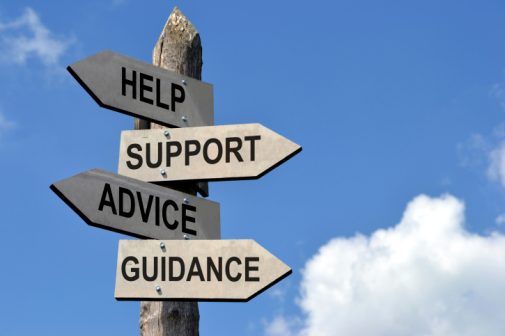The importance of recognizing suicide risk factors and warning signs

In June, the public received news that 55-year-old designer Kate Spade had committed suicide. Three days later, it was reported that celebrity chef Anthony Bourdain had also taken his life.
News outlets reported that Kate’s husband shared that Spade had a history of depression and anxiety. In past interviews, Bourdain spoke candidly about his history with drug addiction and depression.
Those are just two recent suicide reports that have made the news, but annually in the U.S., it’s estimated by the National Institute on Mental Health that more than 44,000 people take their own lives. According to the Centers for Disease Control and Prevention’s latest report, suicide is the 10th leading cause of death among Americans and the second leading cause of death in individuals ages 10-34. In addition, the American Foundation for Suicide Prevention’s 2018 report states suicide death rates nationally are 13.42 per 100,000 people.
Suicide does not discriminate and affects those of every gender, race, ethnicity, upbringing and socio-economic status.
There are multiple risk factors and warning signs for suicide. The National Alliance for Mental Illness reports that 90 percent of individuals who die by suicide experience mental illness. It’s considered to be the number one risk for suicide. Often times, it could be undiagnosed on untreated. Other risk factors may include, but are not limited to: substance abuse, history of trauma, tragedy or loss, history of suicide attempts, poor self-control/impulsivity and family history of suicide.
Warning signs may include, but are not limited to: talking about wanting to die, hopelessness, despair, a sense of unbearable emotional or physical pain, increased use of drugs/alcohol, withdrawing from others, giving away important possessions and purchasing of a firearm or stockpiling pills.
Protective factors are important to help an individual deal with life challenges and to help promote a sense of resiliency. Factors consist of having strong social support, which allows for an individual to talk about their issues or receive love and friendship. A healthy sense of self-worth is important to help an individual recognize their own value. Good coping skills are valuable in helping a person manage difficult emotions in a healthy way.
Another important factor is having healthy thinking because it can help a person identify both their strengths and limitations and not overly focus on mistakes or shortcomings. It’s also about identifying the positive, negative and neutral aspects of a situation then come to a conclusion. If there is an over focus on the negative aspects of a situation, it can make a person feel worse and are more likely to respond to situations that are unhelpful in the long term.
With at risk individuals, it’s important to ask if the person is thinking about killing themselves. Multiple studies indicate that it does not increase suicides or suicidal thoughts. Reducing access to lethal items (firearms, pills) is a part of suicide prevention. Listening and being supportive to an at-risk individual can help reduce suicidal thoughts. Helping an individual connect to trusted individuals, a mental health professional or a spiritual advisor can have a positive impact.
The National Suicide Prevention Hotline is available 24/7 at 800-273-8255 (TALK), Veterans, press 1 after dialing. Also available is the Crisis Text Line at 741741. For the deaf or hearing-impaired individual, they can dial TTY 800-799-4889. It’s important to stay connected to the at-risk individual. In immediate risk situations, calling 911 or going to the local ER are options.
There are treatments and therapies available for individuals at risk, which may consist of psychotherapy with a focus on Cognitive Behavioral Therapy. The focus is to help individuals identify their thought patterns and replace them with healthy alternative thoughts. Dialectical Behavioral Therapy may be used to help identify unhealthy feelings and behaviors. Skills are then taught to help a person cope with upsetting situations. Medication management is another option to help reduce intense emotions. Often times, individuals may see a mental health professional in combination with medication management.
To learn more about suicide and suicide prevention, visit the American Association of Suicidology at www.suicidology.org and the American Foundation for Suicide Prevention at www.afsp.org.
Related Posts
Comments
About the Author
Deborah Fields is a Licensed Clinical Professional Counselor with Advocate's Family Care Network facility. She also is an Advocate Employee Assistance Counselor for South Suburban and Trinity Hospitals. Deborah has been in the behavioral health field for 21 years. In her leisure, she enjoys NHRA's drag racing events, football, attending concert events, the creative arts and is faithful to healthy eating and adequate exercise.

















